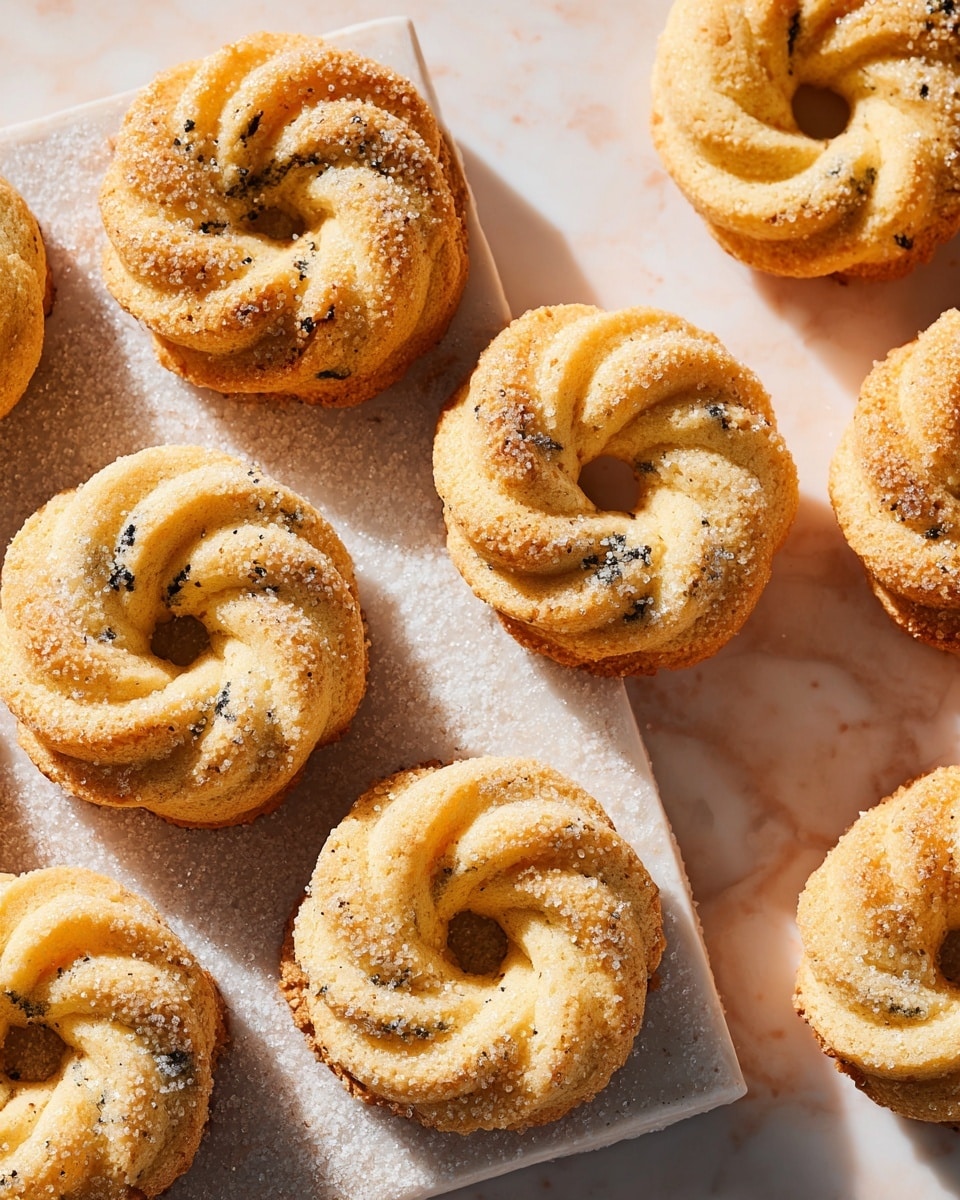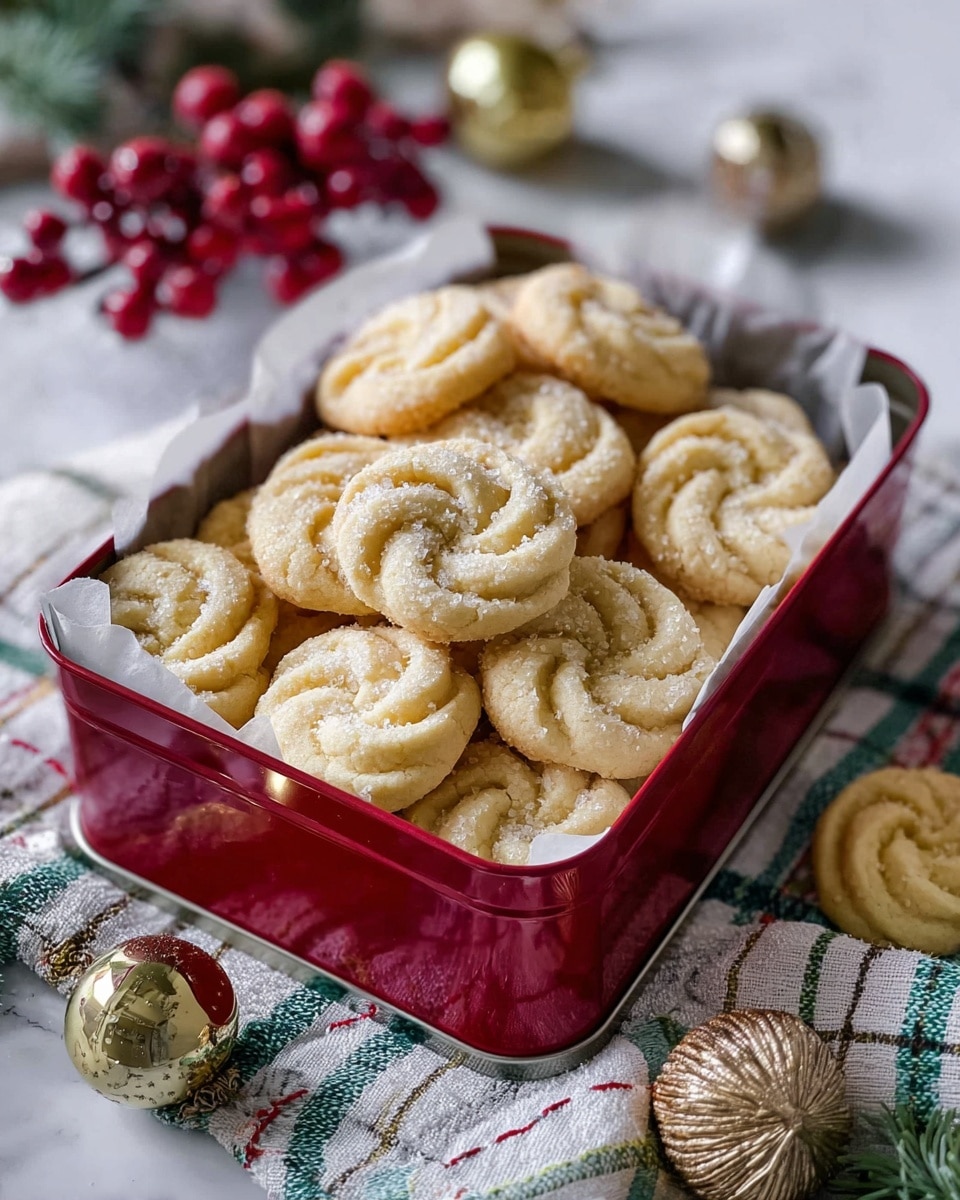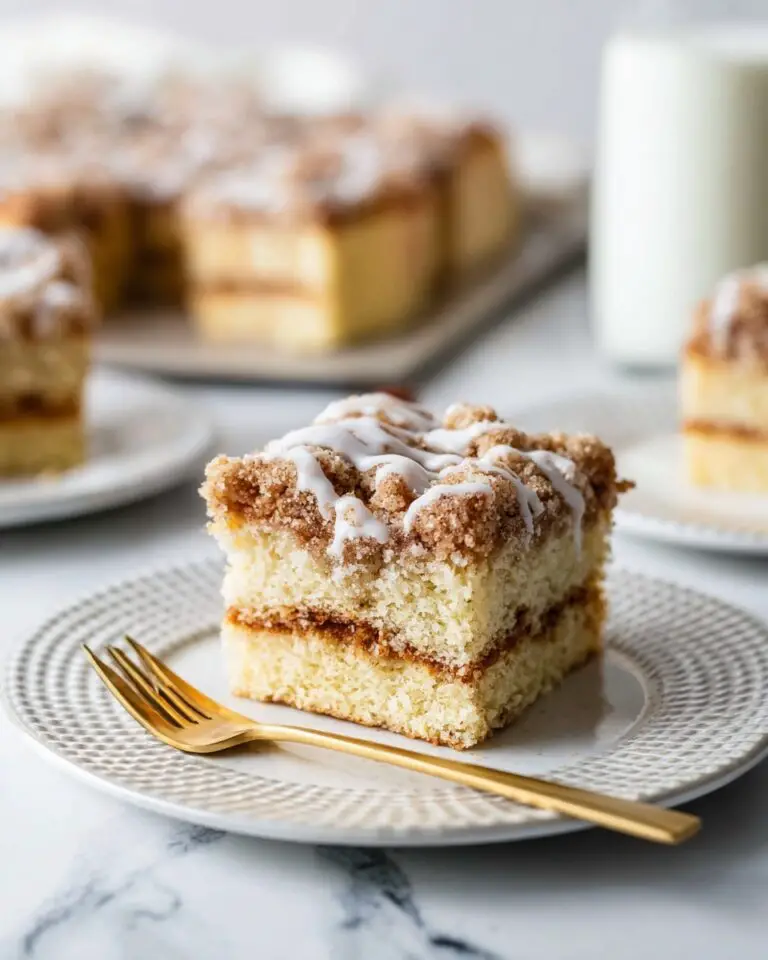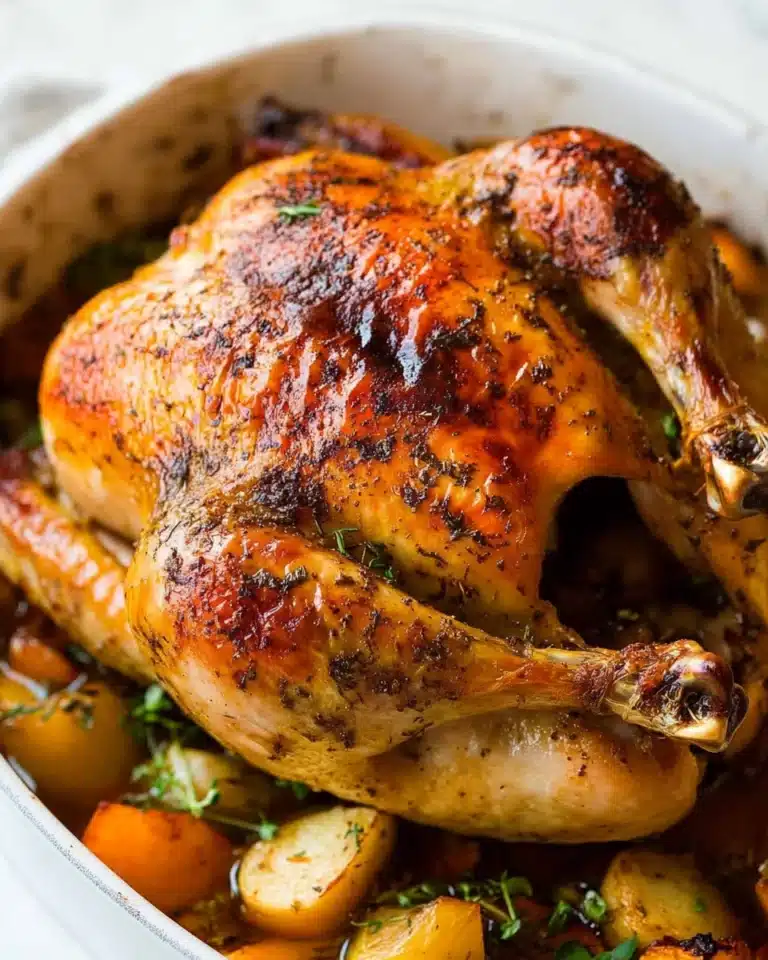Oh, I just have to tell you about these Danish Butter Cookies with Currants and Lemon Recipe — they’re seriously one of my all-time favorite cookies to bake and share. The combination of rich, buttery dough with bursts of tangy lemon zest and sweet little currants creates this perfect balance that’s hard to beat. Anytime I have a batch of these on hand, my family can’t resist sneaking a few before I even get them out for tea.
You’ll find that this recipe really shines during cozy afternoons or festive gatherings when you want something special but not fussy. It’s got that elegant Scandinavian vibe but is surprisingly simple to whip up, which I love. Plus, you get a cookie that’s crisp on the edges and tender in the middle — pure baking magic!
Why You’ll Love This Recipe
- Delightfully Balanced Flavors: The brightness of lemon zest and sweetness of currants perfectly complement the buttery cookie base.
- Easy to Make: With simple steps and basic ingredients, it’s perfect for both baking beginners and seasoned pros.
- Perfect Texture: Crispy edges with a tender, melt-in-your-mouth center every single time.
- Versatile for Occasions: Whether you’re gifting, entertaining, or just indulging, these cookies impress and satisfy.
Ingredients You’ll Need
The ingredients in this Danish Butter Cookies with Currants and Lemon Recipe come together to create that classic rich buttery flavor with a fresh citrus twist. Here’s why each one plays a crucial role and some tips on picking the best.
- Unsalted Butter: Using it at room temperature helps you cream it perfectly with sugar for that tender texture.
- Granulated Sugar: It adds just the right sweetness and helps with the cookie’s crispness.
- Egg: Acts as a binder to hold everything together, so make sure it’s room temp for smooth mixing.
- Finely Grated Lemon Zest: Fresh zest brightens the whole cookie – and trust me, bottled zest just won’t cut it here.
- Pure Vanilla Extract: Adds warmth and depth, rounding out all those flavors.
- All-Purpose Flour: The base for structure — sift it for easier mixing and a lighter cookie.
- Dried Currants: Tiny bursts of sweet-tart goodness that make each bite interesting.
- Baking Soda: Gives just enough lift for a delicate crumb without puffing up too much.
- Kosher Salt: Enhances flavor and balances sweetness — don’t skip it!
- Sanding Sugar: For coating the cookies, adding a pretty sparkle and extra crunch.
Variations
I love how adaptable this Danish Butter Cookies with Currants and Lemon Recipe is — you can easily switch it up to fit your mood or pantry. Don’t be afraid to make these your own by experimenting a bit!
- Orange Zest Swap: I once swapped lemon zest for orange zest, and it gave the cookies a warm, sweet twist that my friends adored.
- Raisins or Dried Cranberries: If you don’t have currants handy, try these alternatives; they bring a similar chewy sweetness.
- Gluten-Free Version: Use a gluten-free flour blend and be sure to adjust for texture—a little more butter can help keep them tender.
- No-Sugar Coating: For a less sweet cookie, skip the sanding sugar and dust with powdered sugar after baking instead.
How to Make Danish Butter Cookies with Currants and Lemon Recipe
Step 1: Cream the Butter and Sugar
Start by beating the unsalted butter and granulated sugar in a large bowl using your electric mixer on medium speed. This usually takes about 3 minutes until the mixture is combined and wonderfully creamy. Make sure your butter is soft but not melted—this step is key for that perfect cookie texture. Then add in the egg, fresh lemon zest, and vanilla extract, beating everything together until smooth and beautifully aromatic. It’s at this stage the dough starts to build its lovely base flavor that you’ll instantly love!
Step 2: Add Dry Ingredients Gently
Next, gently beat in the all-purpose flour, dried currants, baking soda, and kosher salt. I always mix these with a spatula after the initial beating to avoid overworking the dough — you want to combine until just mixed for tender cookies. The dried currants add those little pops of chewy sweetness which, paired with lemon, brighten each bite. Try to avoid overmixing here to keep the texture light and buttery.
Step 3: Pipe and Freeze the Cookies
Line a rimmed baking sheet with parchment paper and transfer about one-quarter of your cookie dough to a piping bag fitted with a ½-inch star tip. Pipe out small rings roughly 1¾ inches across onto the sheet. I find the star tip really helps these cookies keep that classic ridged look that makes them extra special. Freeze the piped cookies for about 20 minutes until firm—this helps maintain their shape while baking. Pro tip: if your dough softens too much while piping, pop it back in the fridge before continuing.
Step 4: Coat and Bake
Preheat your oven to 350°F (180°C) and line two more baking sheets with parchment. Pour some sanding sugar into a small bowl. Quickly dip the chilled cookies into the sugar, coating them lightly before placing them about 1 inch apart on the baking sheets. During baking, rotate the pans halfway through to ensure even golden edges. They’ll bake for 13 to 18 minutes, and you’ll know they’re ready when the edges turn a beautiful golden hue. Then, transfer the cookies to a wire rack to cool completely before enjoying.
Step 5: Store or Serve
If you’re not digging into these Danish Butter Cookies with Currants and Lemon Recipe right away, no worries! They can be stored in an airtight container at room temperature for up to 3 days, or frozen for up to 2 months. I like to keep a batch in the freezer for surprise guests or a quick treat any time. Just remember — these cookies taste freshest when enjoyed within the first couple of days.
Pro Tips for Making Danish Butter Cookies with Currants and Lemon Recipe
- Use Room Temperature Ingredients: It makes creaming easier, ensuring a smooth dough and tender cookies every time.
- Don’t Skip the Freezing Step: Chilling piped cookies helps them keep their shape and prevents spreading during baking.
- Fresh Zest is Key: I learned that fresh lemon zest really lifts the flavor — dried zest just doesn’t compare.
- Watch Baking Time Closely: Oven differences mean it’s better to check earlier—pull them out when edges just start to turn golden.
How to Serve Danish Butter Cookies with Currants and Lemon Recipe

Garnishes
I love sprinkling a little extra sanding sugar over the cookies right after baking to add sparkle and crunch. Sometimes, I add a few tiny edible flower petals when serving for a fancy touch — it always wows guests and feels super elegant without much effort.
Side Dishes
These cookies are lovely alongside a hot cup of Earl Grey or herbal tea. For a dessert platter, I serve them with simple fresh fruit like berries or a small bowl of lemon curd for dipping. Your family and friends will really appreciate the fresh, bright pairing.
Creative Ways to Present
When I’m gifting these Danish Butter Cookies with Currants and Lemon Recipe, I like to stack them in small clear cookie tins layered with parchment paper and tied with a lemon-yellow ribbon. For parties, arranging them on a pretty tiered serving tray with fresh sprigs of mint or lemon verbena adds charm and makes the whole spread feel special.
Make Ahead and Storage
Storing Leftovers
I usually store any leftover cookies in an airtight container at room temperature—this keeps them crispy for a few days. To keep the cookies fresh longer, wax paper sheets between layers help prevent them from sticking together or losing their lovely texture.
Freezing
Freezing is a game changer! I’ve frozen these cookies both before and after baking. Frozen dough rings can be baked straight from the freezer, which is perfect for quick fresh batches. Baked cookies freeze well too—just make sure they’re fully cooled and sealed tightly in a freezer-safe bag to maintain their flavor and texture.
Reheating
To refresh frozen or leftover cookies, I pop them in a 300°F (150°C) oven for 5-7 minutes—this brings back their crisp edges and warmth without drying them out. Avoid microwaving if you can; it tends to make them soft.
FAQs
-
Can I substitute currants with other dried fruits?
Absolutely! Dried currants have a tart sweetness, but you can swap them with raisins, dried cranberries, or even chopped dried cherries. Just keep an eye on the texture and sweetness level, as some dried fruits can be sweeter or softer.
-
Do I have to pipe the dough or can I shape the cookies by hand?
You can shape the dough by hand if you prefer, but piping helps achieve that classic ridged ring shape typical of Danish butter cookies. If you hand-shape, try to keep the dough chilled and bake on a parchment-lined sheet for best results.
-
What’s the best way to zest lemons for this recipe?
Use a microplane or fine grater to remove just the colorful outer rind without the bitter white pith underneath. Freshly grated zest brings the brightest flavor and aroma, which you’ll definitely notice in these cookies.
-
Can I make these cookies ahead of time?
Yes! These cookies can be made up to 3 days ahead and stored at room temperature in an airtight container. For longer storage, freeze baked cookies for up to 2 months and thaw before serving.
Final Thoughts
This Danish Butter Cookies with Currants and Lemon Recipe holds a special place in my heart because it’s a simple yet elegant treat that always brings a smile to our table. I love sharing these with friends, especially when they comment on those surprise bursts of currants and the hint of citrus. Give this recipe a try — you’ll enjoy the effortless process and the wonderful rewards baked right into each cookie. Trust me, once you make a batch, it’ll quickly become a beloved staple in your baking repertoire as well!
Print
Danish Butter Cookies with Currants and Lemon Recipe
- Prep Time: 30 Minutes
- Cook Time: 18 Minutes
- Total Time: 48 Minutes
- Yield: About 35 cookies
- Category: Dessert
- Method: Baking
- Cuisine: Danish
Description
Classic Danish Butter Cookies with a delightful combination of buttery richness, hints of lemon zest, and sweet dried currants. These delicate, piped ring-shaped cookies are coated in sanding sugar for a perfect crunchy exterior and a tender, melt-in-your-mouth interior. Ideal for festive occasions or a comforting treat with tea or coffee.
Ingredients
Cookie Dough
- 1 cup (2 sticks, 1/2 pound, or 227 grams) unsalted butter, room temperature
- 1/2 cup (100 grams) granulated sugar
- 1 large egg, room temperature
- 1 tablespoon finely grated lemon zest
- 1 teaspoon pure vanilla extract
- 2 cup (250 grams) all-purpose flour
- 5 ounce (142 grams) dried currants
- 1/2 teaspoon baking soda
- 1/2 teaspoon kosher salt
Topping
- 1 handful sanding sugar
Instructions
- Prepare the Dough: In a large bowl, use an electric mixer on medium speed to beat the unsalted butter and granulated sugar for about 3 minutes until the mixture is creamy and well combined. Add the egg, finely grated lemon zest, and pure vanilla extract and beat again until fully blended. Gradually beat in the all-purpose flour, dried currants, baking soda, and kosher salt just until the dough comes together.
- Pipe the Cookies: Line a rimmed baking sheet with parchment paper. Transfer about one-quarter of the dough to a piping bag fitted with a ½-inch (1.2-centimeter) star tip. Pipe small rings approximately 1¾ inches (3.6 centimeters) in diameter onto the prepared baking sheet. Repeat this process with the remaining dough, arranging the rings evenly spaced. Freeze the piped cookies for about 20 minutes until firm and chilled.
- Preheat Oven and Prepare Sugar Coating: While the cookies chill, preheat your oven to 350°F (180°C) and line two rimmed baking sheets with parchment paper. Pour a small amount of sanding sugar into a bowl. Quickly dip each chilled cookie into the sanding sugar to coat them evenly, then place them about 1 inch apart on the prepared baking sheets. Store any unused cookies in the freezer.
- Bake the Cookies: Place the baking sheets in the oven and bake the cookies for 13 to 18 minutes, rotating the baking sheets halfway through the baking time. Bake until the edges are golden and the cookies are set. Remove from the oven and transfer the baking sheets to wire racks to allow the cookies to cool completely.
- Storage and Make-Ahead: These butter cookies can be prepared up to 3 days in advance. Store them in an airtight container at room temperature to maintain freshness or freeze for up to 2 months for longer storage.
Notes
- Ensure butter and egg are at room temperature for smooth mixing and proper texture.
- Freezing the piped cookies before baking helps maintain their shape and prevents spreading.
- Sanding sugar adds a lovely crunchy texture and sweet sparkle on the cookies’ surface.
- You can substitute dried currants with raisins or chopped dried cranberries if preferred.
- Use parchment paper on baking sheets to prevent sticking and for easy cleanup.
- Rotate baking sheets halfway through baking to ensure even browning.
Nutrition
- Serving Size: 1 cookie
- Calories: 90
- Sugar: 5g
- Sodium: 35mg
- Fat: 5g
- Saturated Fat: 3g
- Unsaturated Fat: 2g
- Trans Fat: 0g
- Carbohydrates: 10g
- Fiber: 0.5g
- Protein: 1g
- Cholesterol: 15mg









